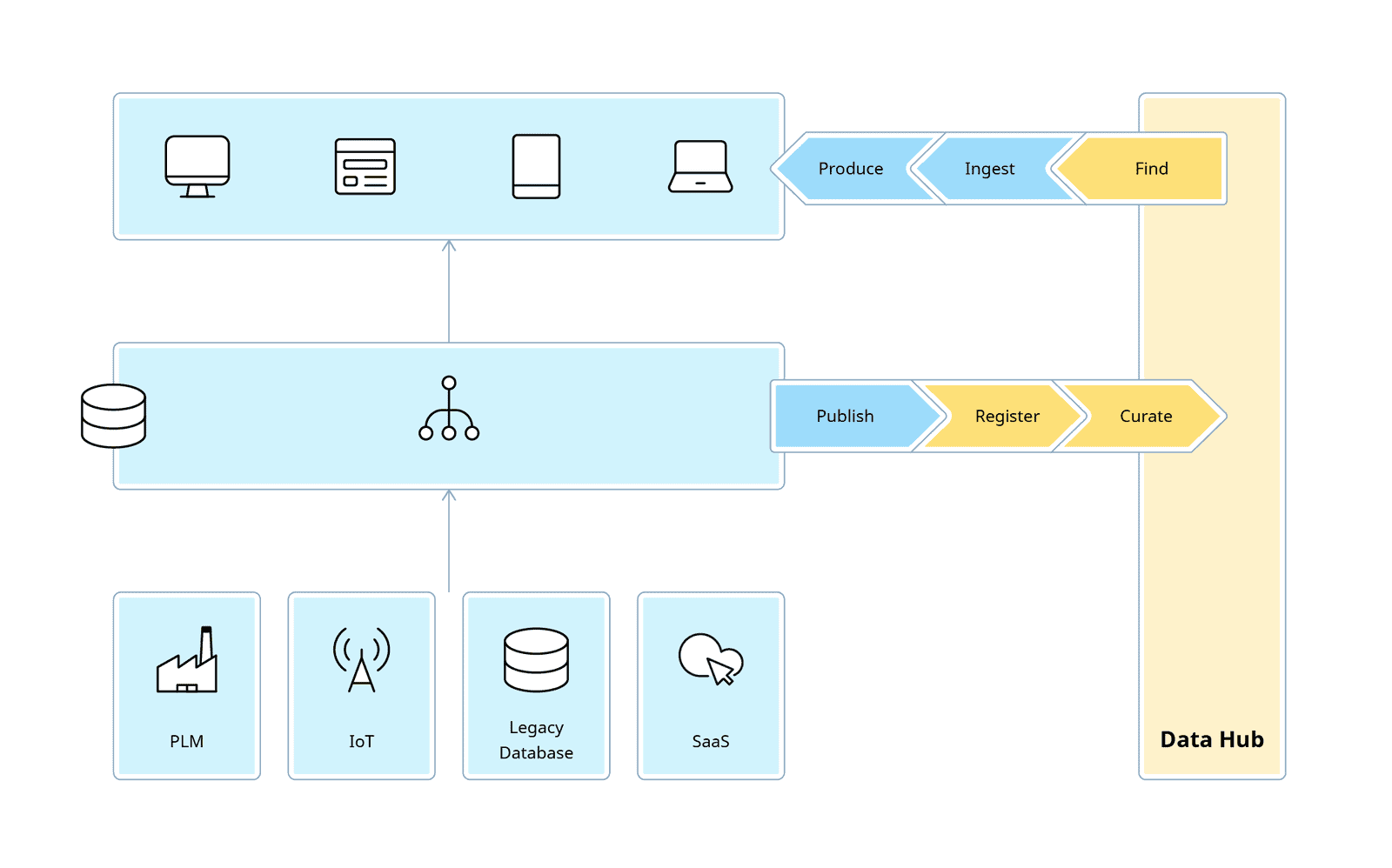Connector Framework
Table of contents
What Is the Data Hub Connector Framework?
The connector framework is the core foundation for connecting external systems to Studio Pro and the Catalog in both general (for example, REST, SQL) and use case-specific (for example, purchasing, HR, insurance, IoT) ways.
This framework enables building connectors using Mendix that allow you to connect to data and logic in any application or service. These connectors can integrate with the Data Hub Catalog and external entities so that anyone can find and use external data. To facilitate this, the existing Mendix connector framework is extended to ensure you can expose any data as external entities that will be registered in the Catalog for discovery and then drag-and-dropped into the consuming applications.
This reduces the barrier-to-entry and time-to-value when leveraging data from other systems and lays the groundwork for exposing more than just data (for example, business events, actions, and workflows).
How Does the Connector Framework Work?
Next to data in the form of OData resources, published OData services can also expose logic. For example, a published OData service can expose a data action called ValidateCreditCardNumber that is implemented with a custom microflow.
Published OData services can provide custom logic to determine how OData resources are retrieved. You can do this by providing custom microflow resolvers that specify how data is retrieved. For normal OData resources, the Mendix Platform fetches the data from the application database. For custom resolvers, the microflow can be used to implement anything required. This can be as simple as a custom REST call, custom Java action, or a Mendix Marketplace module.
Next to data in the form of OData resources, published OData services can also expose logic. For example, a published OData service can expose a data action called ValidateCreditCardNumber that is implemented with a custom microflow.

What Are Data Hub Connectors?
Connectors are individual packages for connecting external systems in either general (for example, REST, SQL) or use case-specific (for example, purchasing, HR, insurance, IoT) ways. These connectors ensure that the proper metadata is connected to the Catalog, that design-time abstractions work correctly within Mendix Studio Pro (for example, with external entities), and that execution and security are properly handled at runtime. This enables users of any technical background to quickly discover and use integrations in a standards-compliant manner.
How Do Connectors Fit Into the Data Hub Connector Framework?
Mendix connectors are Mendix modules that provide functionality to connect to external services, logic, and data. The connector framework extends this concept by enabling the connector maker to wrap external services in a published OData service.
This means that when the Data Hub connector is deployed in a connector app, the published data and logic will be registered in the Catalog and can be consumed through external entities and external actions.
How Do I Build Connectors & What Are the Best Practices?
When building connectors, there is one approach for connecting non-industrial systems and another approach for industrial systems. We have step-by-step guides that also contain best practices and performance considerations.
For more information, see How to Build Microflow Actions Using the Mendix Connector Kit.
Where Can I Get More Information or Provide Feedback?
More information is available in the connector framework documentation. Connector best practices and an Xcelerator connector guide are coming soon. To provide feedback directly, you can submit it to the Mendix Ideas Forum.